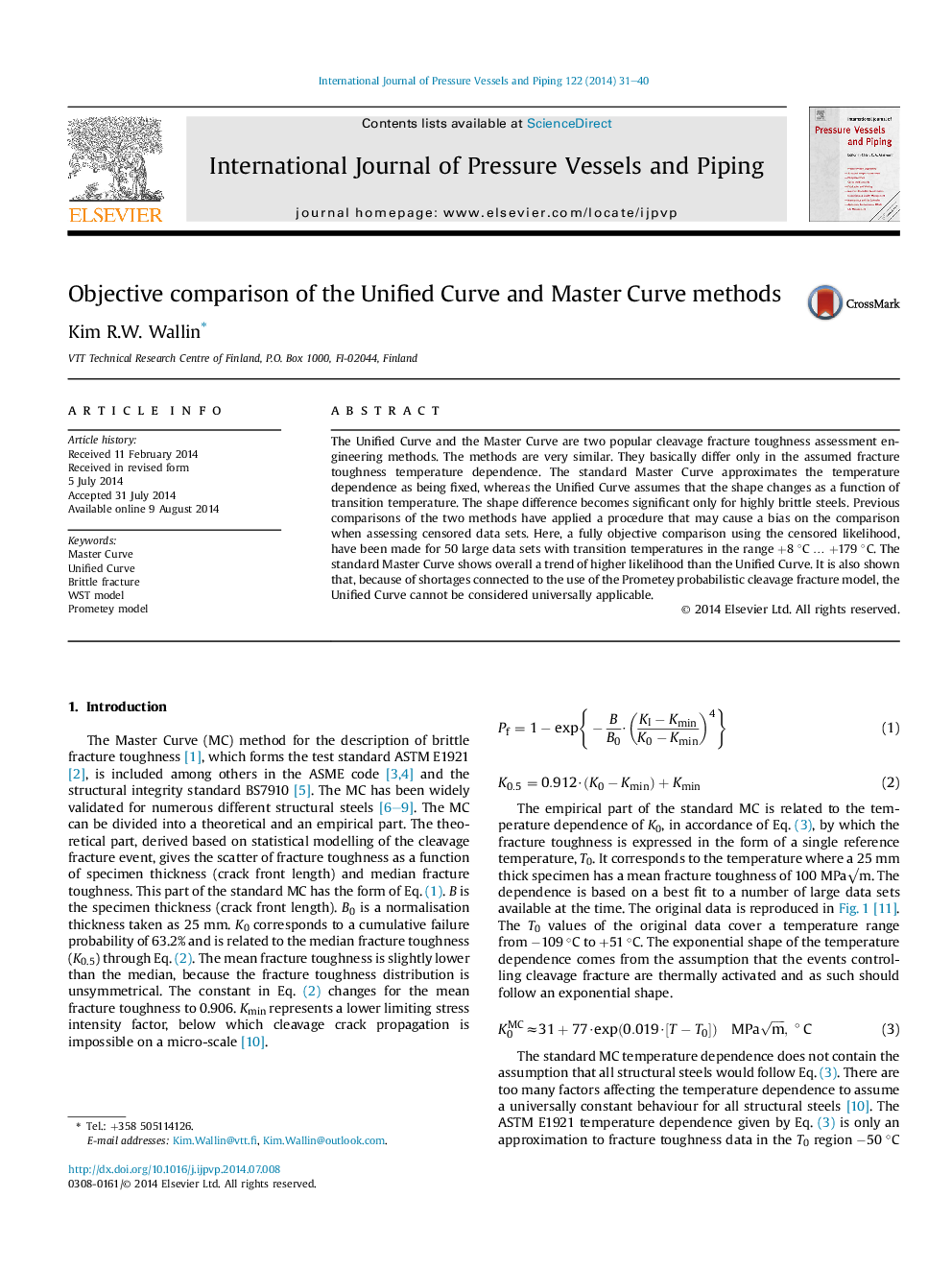| کد مقاله | کد نشریه | سال انتشار | مقاله انگلیسی | نسخه تمام متن |
|---|---|---|---|---|
| 785333 | 1466074 | 2014 | 10 صفحه PDF | دانلود رایگان |
• The standard Master Curve describes fracture toughness data better than the Unified Curve.
• Previous comparisons of the two methods have been based on a subjective procedure.
• The use of the Master Curve expression for scatter and size effect in the Unified Curve is incorrect.
• The claim that the Unified Curve would be universally applicable is flawed.
The Unified Curve and the Master Curve are two popular cleavage fracture toughness assessment engineering methods. The methods are very similar. They basically differ only in the assumed fracture toughness temperature dependence. The standard Master Curve approximates the temperature dependence as being fixed, whereas the Unified Curve assumes that the shape changes as a function of transition temperature. The shape difference becomes significant only for highly brittle steels. Previous comparisons of the two methods have applied a procedure that may cause a bias on the comparison when assessing censored data sets. Here, a fully objective comparison using the censored likelihood, have been made for 50 large data sets with transition temperatures in the range +8 °C … +179 °C. The standard Master Curve shows overall a trend of higher likelihood than the Unified Curve. It is also shown that, because of shortages connected to the use of the Prometey probabilistic cleavage fracture model, the Unified Curve cannot be considered universally applicable.
Figure optionsDownload as PowerPoint slide
Journal: International Journal of Pressure Vessels and Piping - Volume 122, October 2014, Pages 31–40
